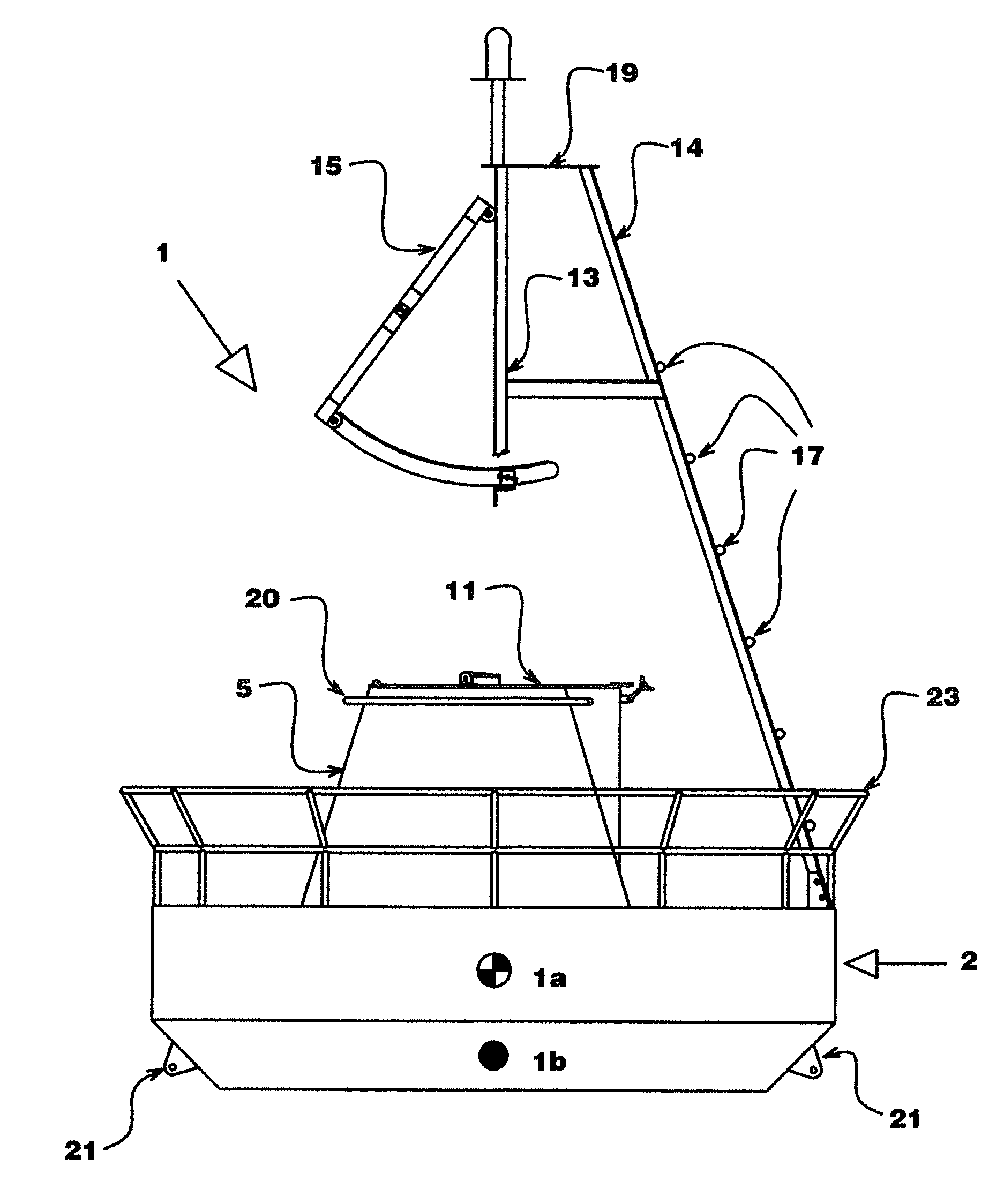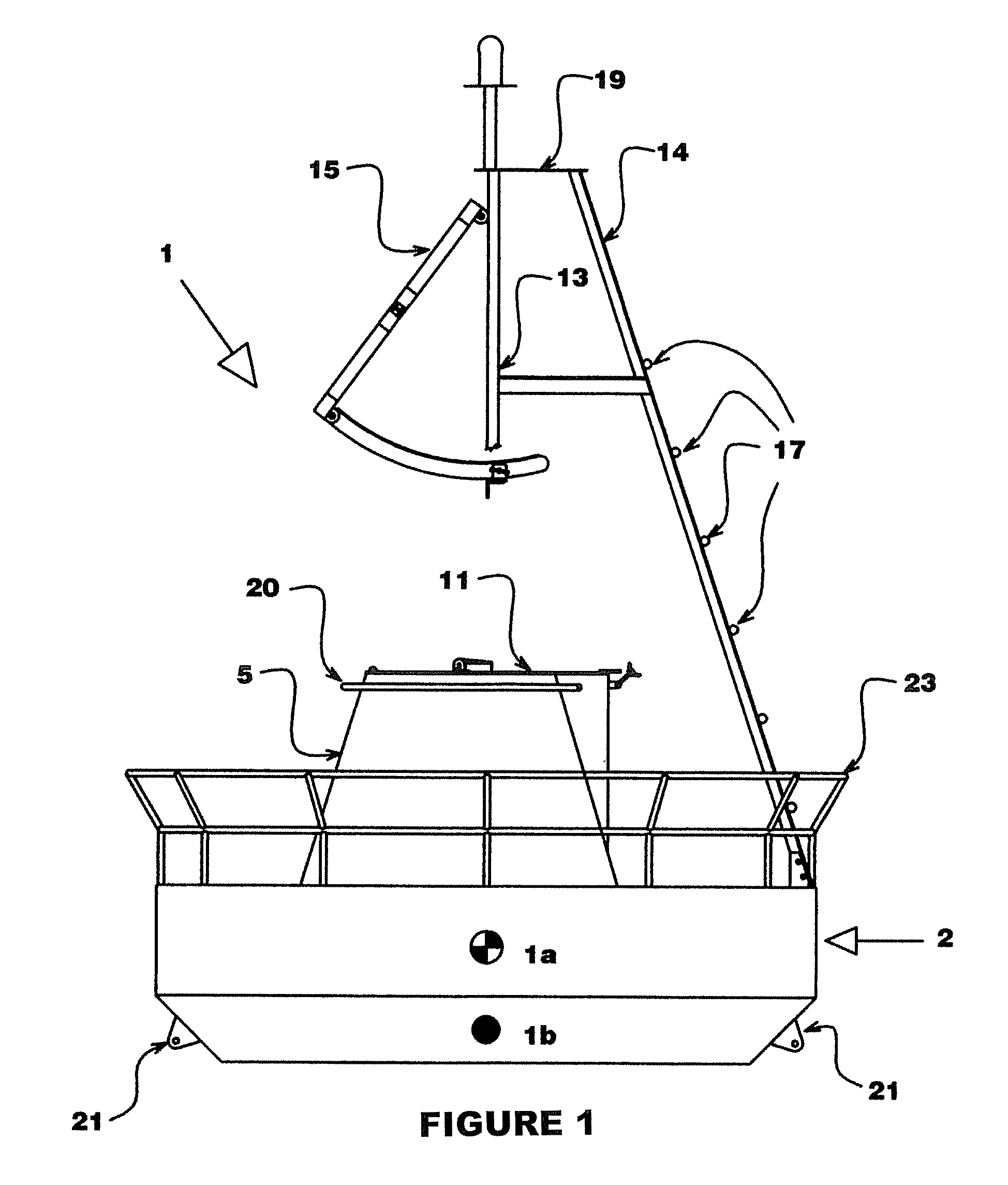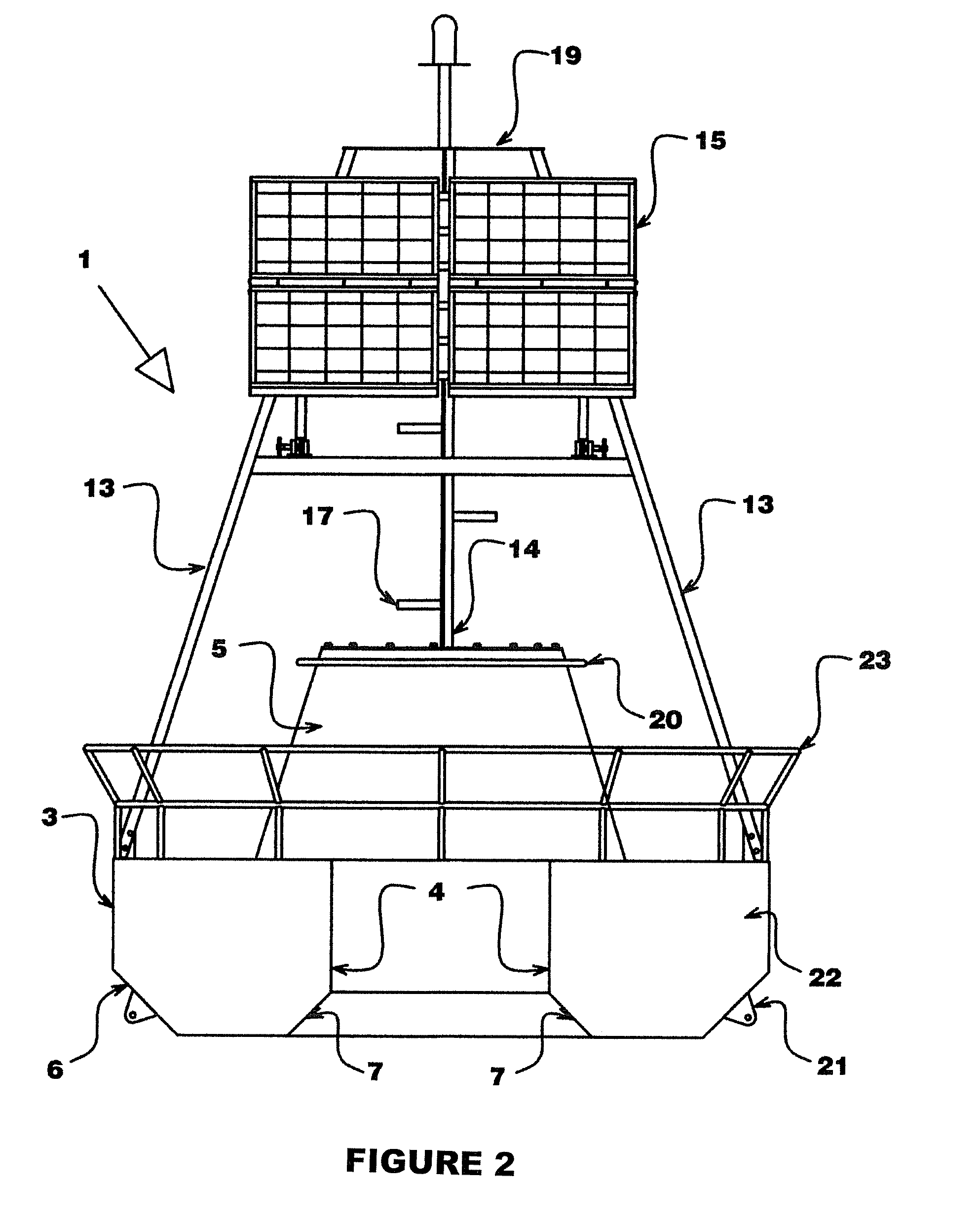Autonomous, multipurpose floating platform for environmental and oceanographic monitoring
a technology for environmental and oceanographic monitoring and floating platforms, applied in floating buildings, special purpose vessels, waterborne vessels, etc., can solve the problems of inability to do maintenance and inspection on the platform, affecting the useful life of communications cables, and affecting the safety of users, so as to reduce the risk of slipping and instability, and reduce the effect of jerking
- Summary
- Abstract
- Description
- Claims
- Application Information
AI Technical Summary
Benefits of technology
Problems solved by technology
Method used
Image
Examples
Embodiment Construction
[0045]The floating platform (1) has a toroidal main structure (2), that is, there are two cylinders, an exterior one (3) and an interior one (4), closed in their upper and lower parts. The external cylinder (3) has an approximate diameter of 3 meters and a height of 0.9 meters, although these dimensions can be modified according to the application. The internal diameter (4) has a diameter of 1 meter and a height of 0.9 meter, and its dimensions can also be modified according to the application. This internal cylindrical section allows the communication, through its internal part, between the free surface and the top part, with a body having the form of a truncated cone (5) of the floating platform.
[0046]The external cylinder (3) has a chamfer (6) in its bottom part, for improving the stability against the waves and the wild conditions. The inner cylinder (4) has also a chamfer (7) in its lower part that reduces the collision with the coiling element (31) of the winch (27) against th...
PUM
 Login to View More
Login to View More Abstract
Description
Claims
Application Information
 Login to View More
Login to View More - R&D
- Intellectual Property
- Life Sciences
- Materials
- Tech Scout
- Unparalleled Data Quality
- Higher Quality Content
- 60% Fewer Hallucinations
Browse by: Latest US Patents, China's latest patents, Technical Efficacy Thesaurus, Application Domain, Technology Topic, Popular Technical Reports.
© 2025 PatSnap. All rights reserved.Legal|Privacy policy|Modern Slavery Act Transparency Statement|Sitemap|About US| Contact US: help@patsnap.com



